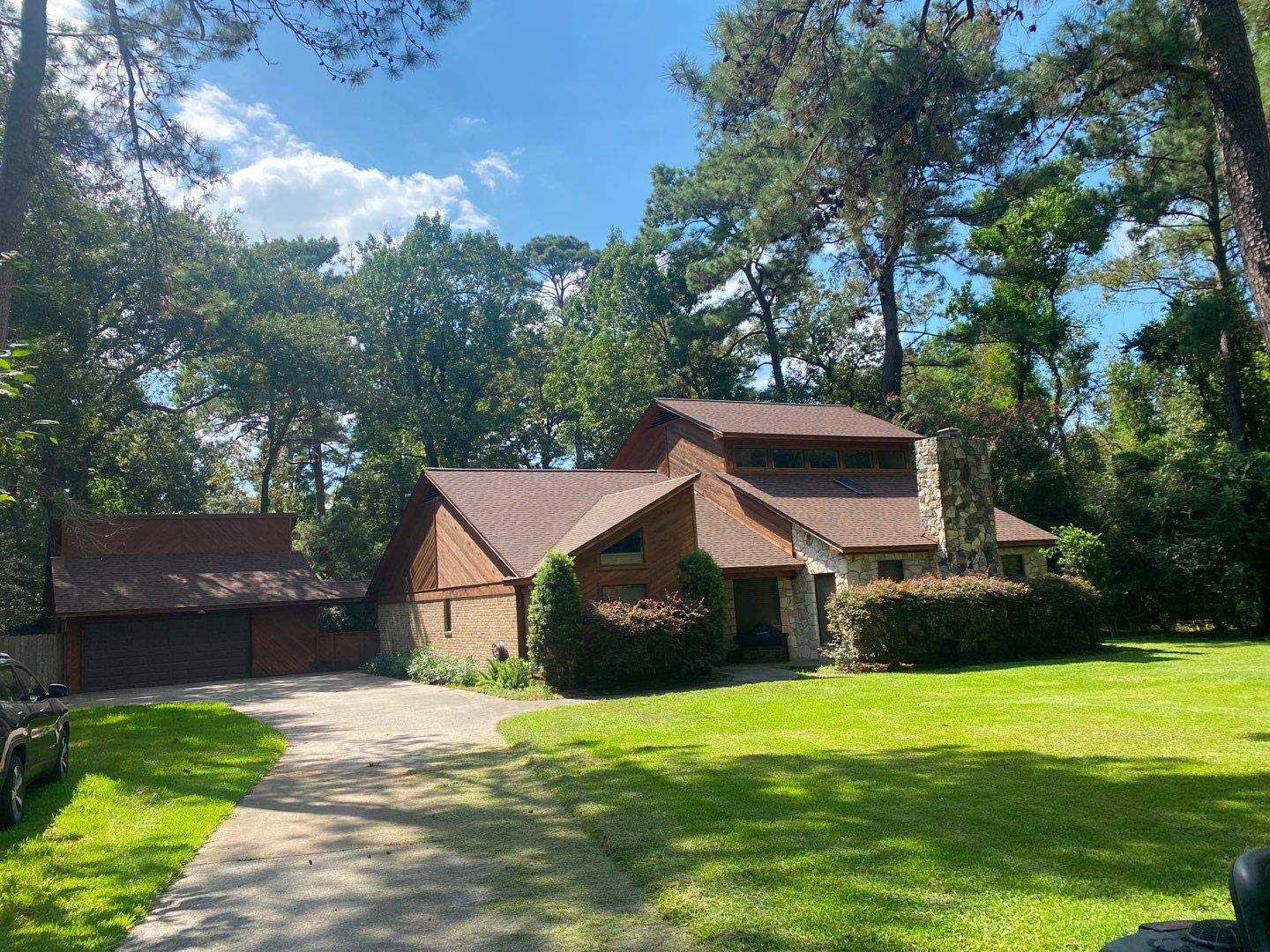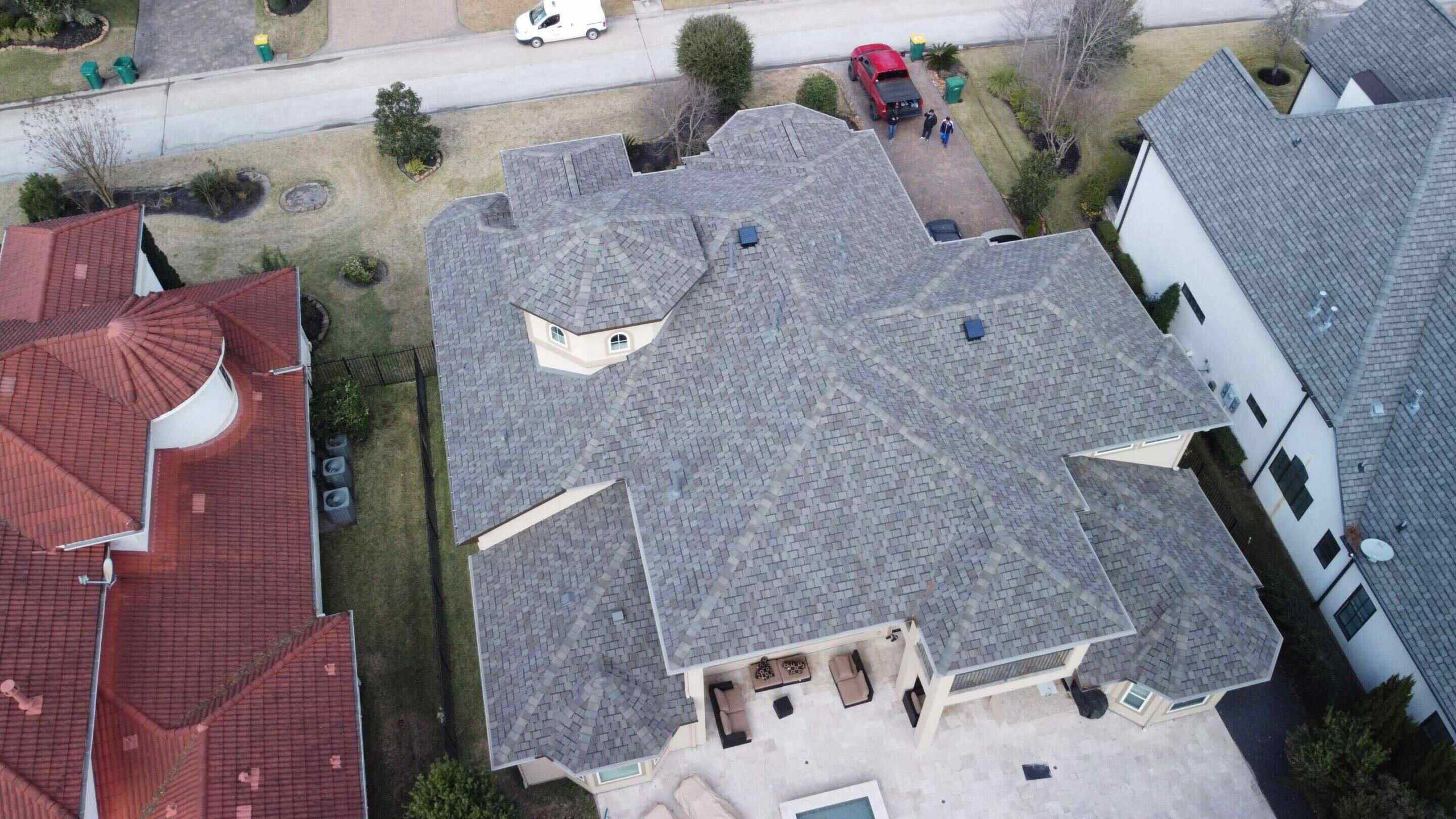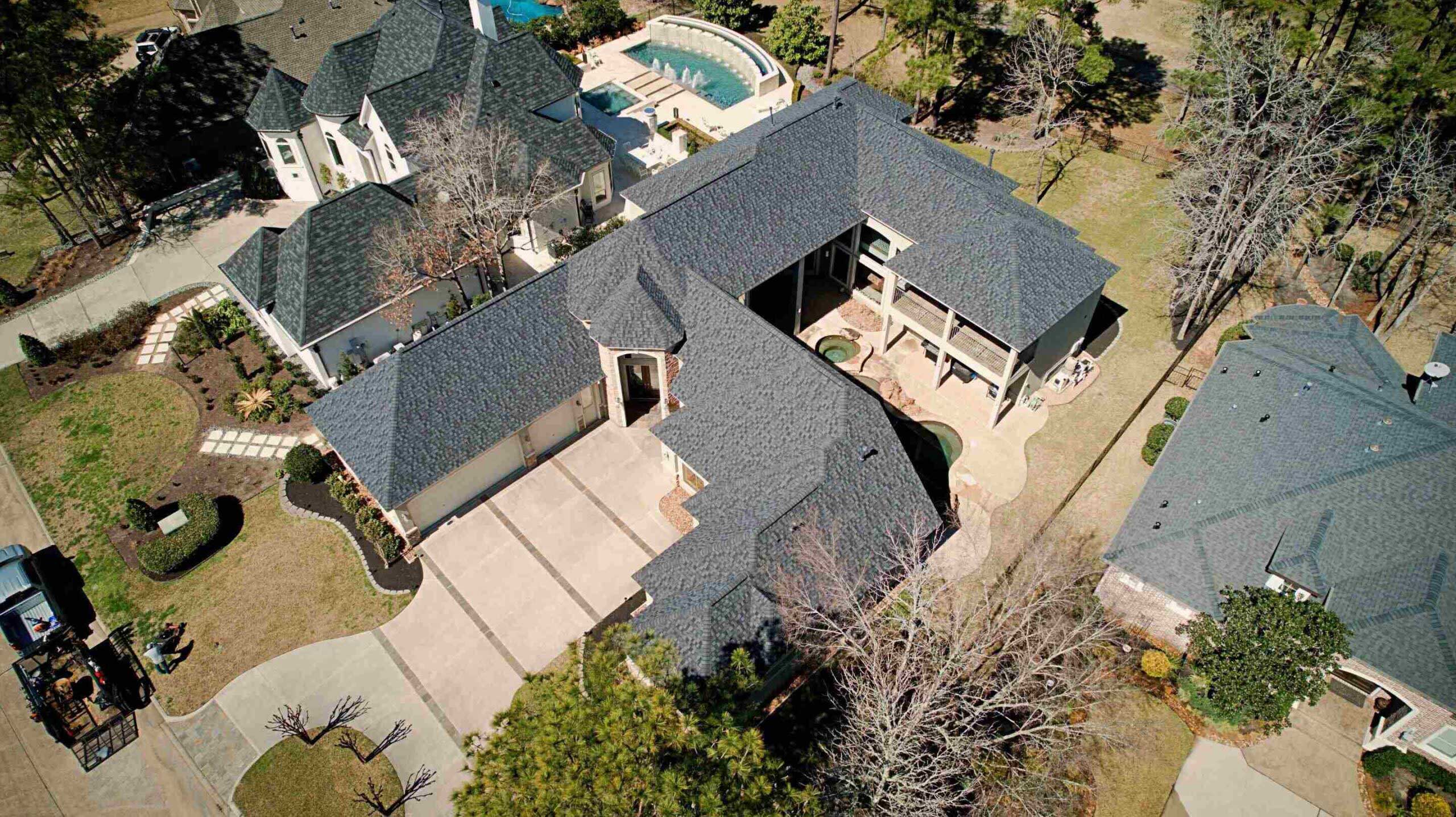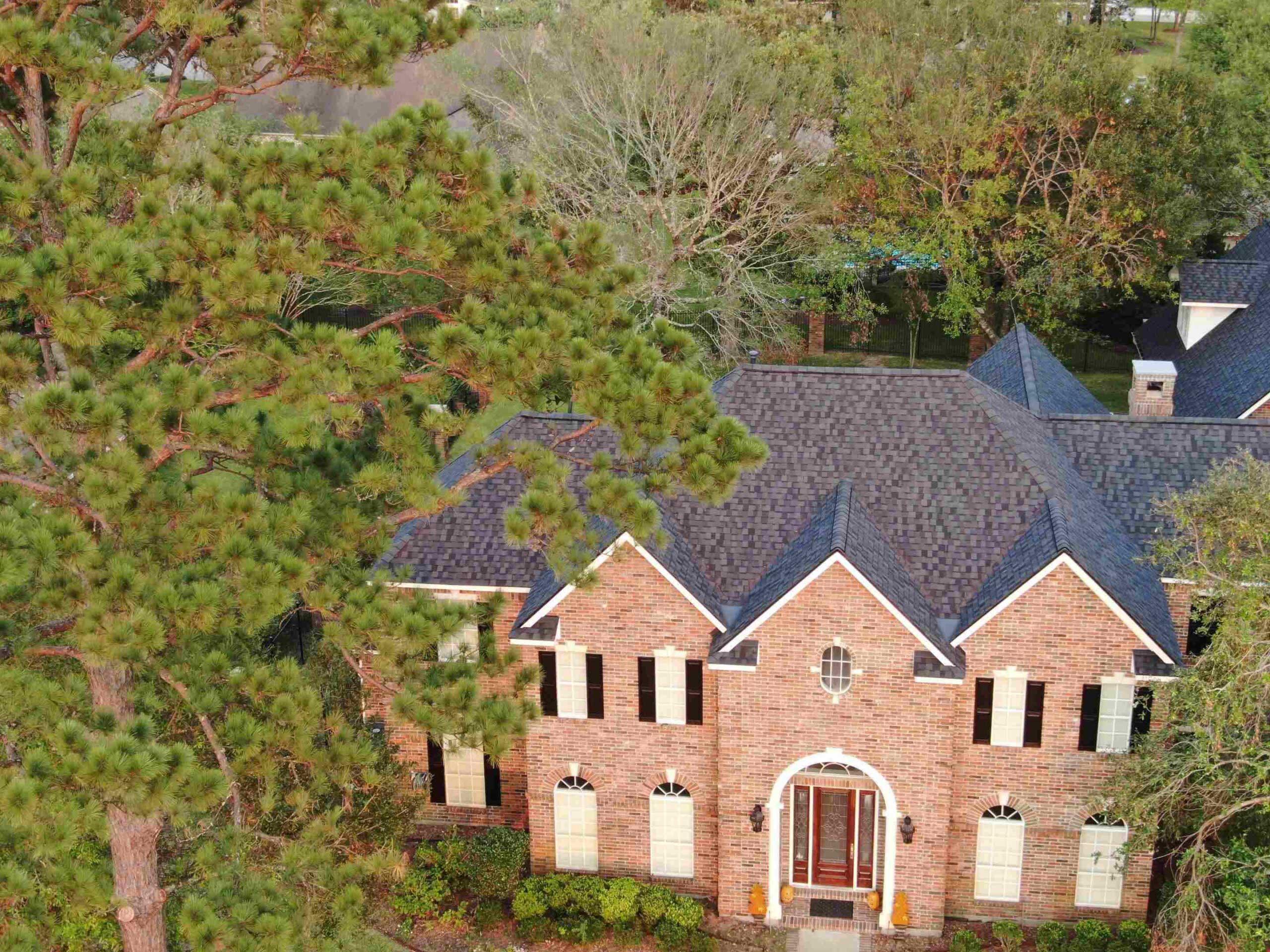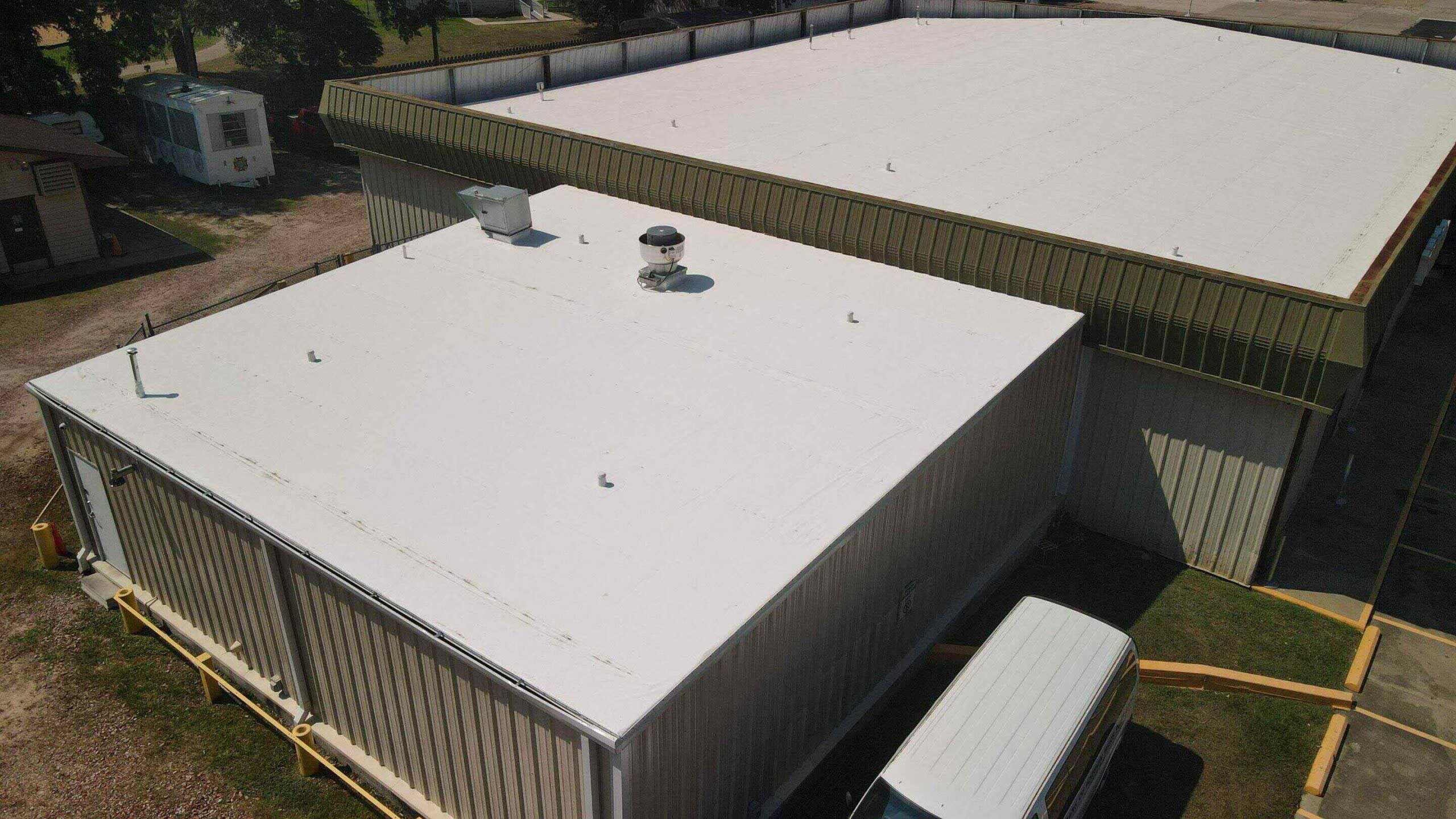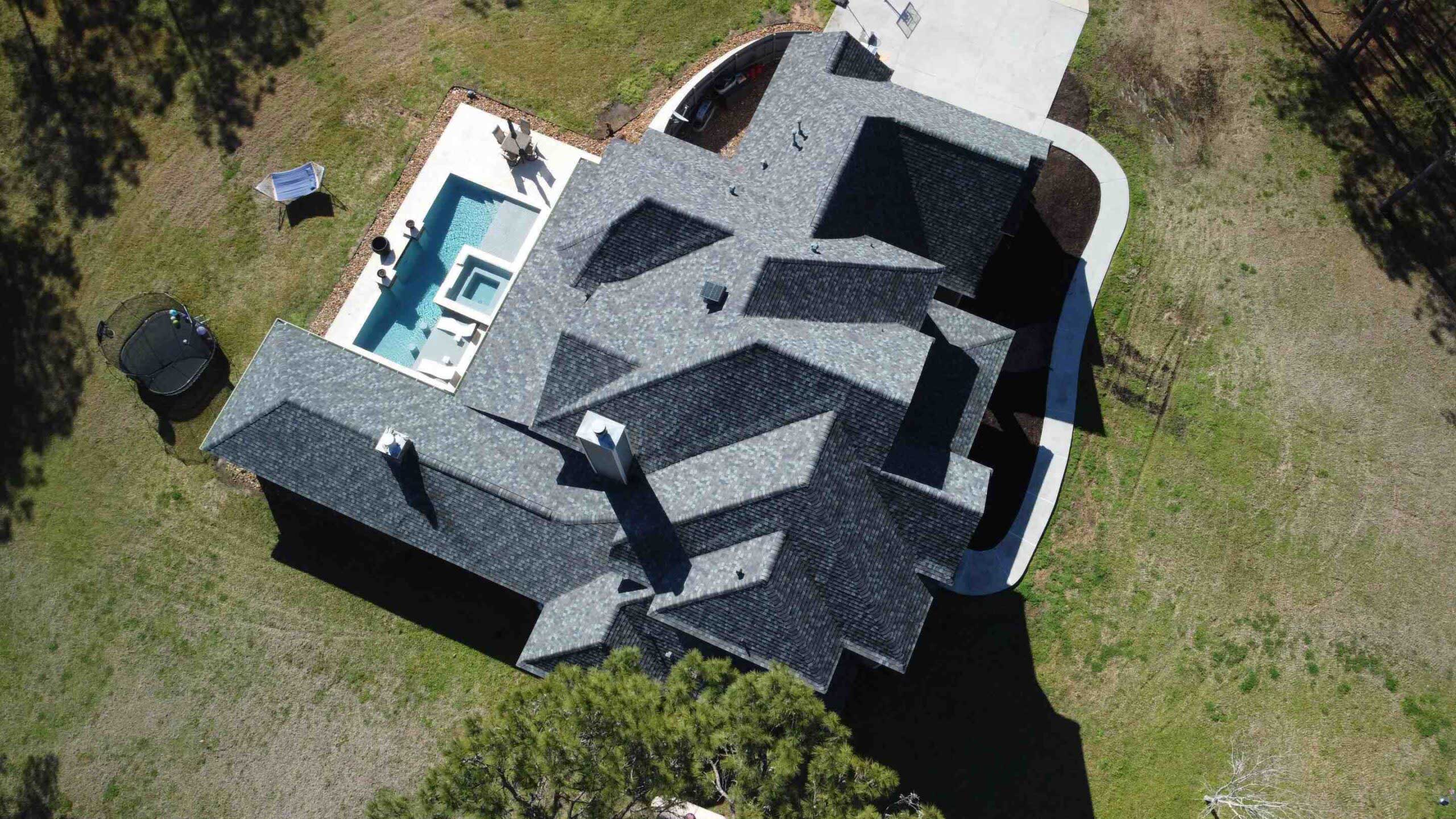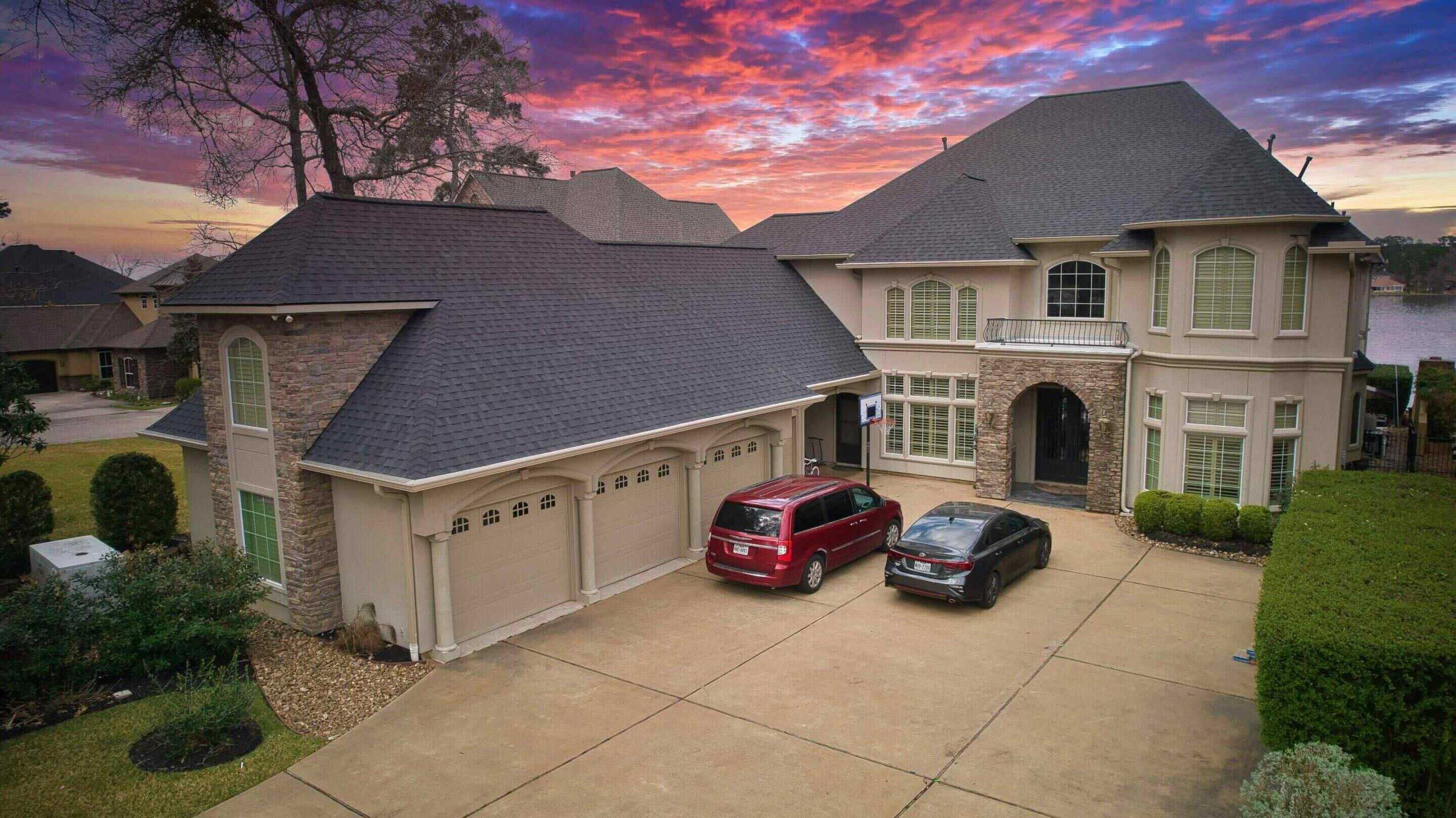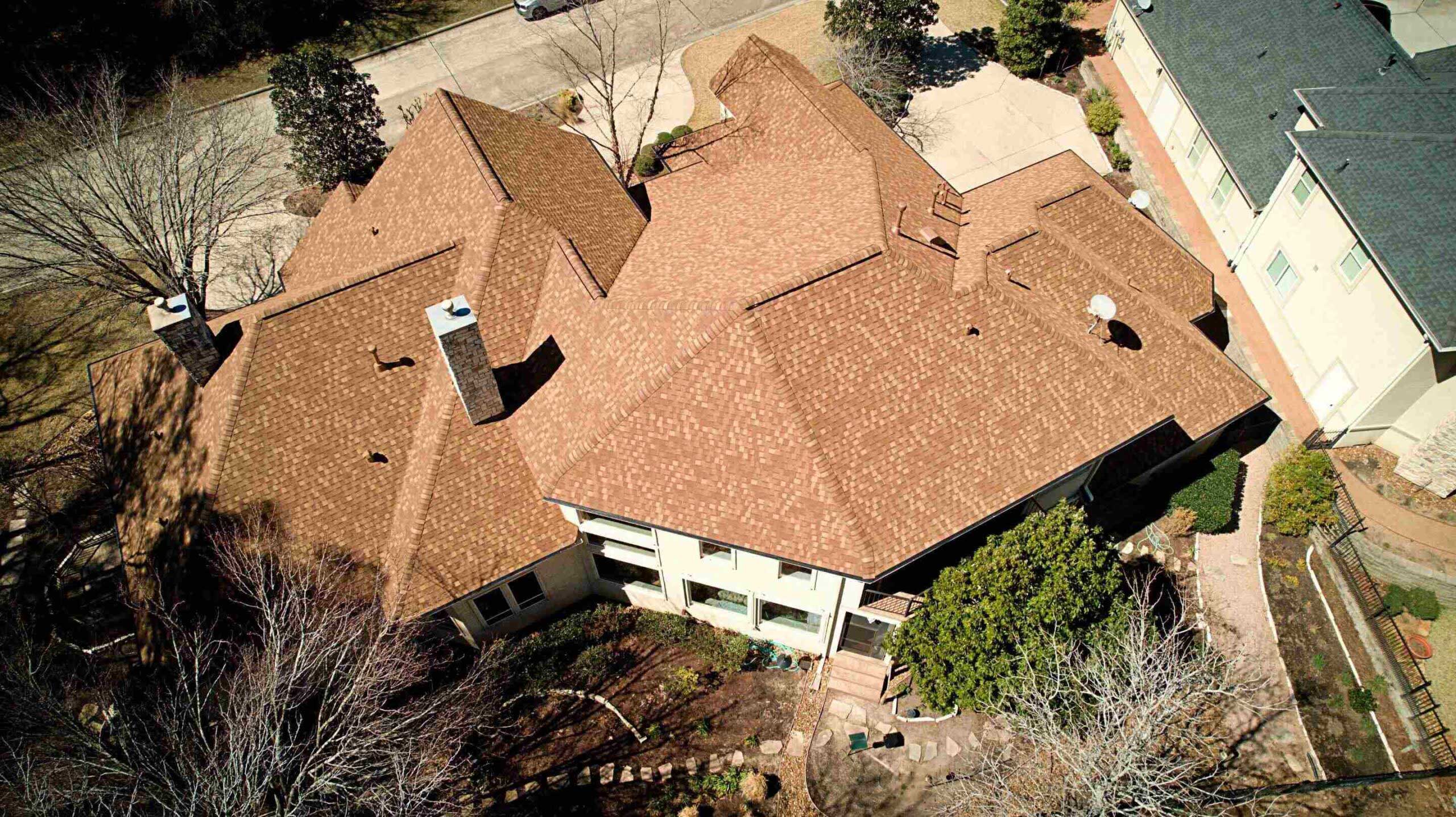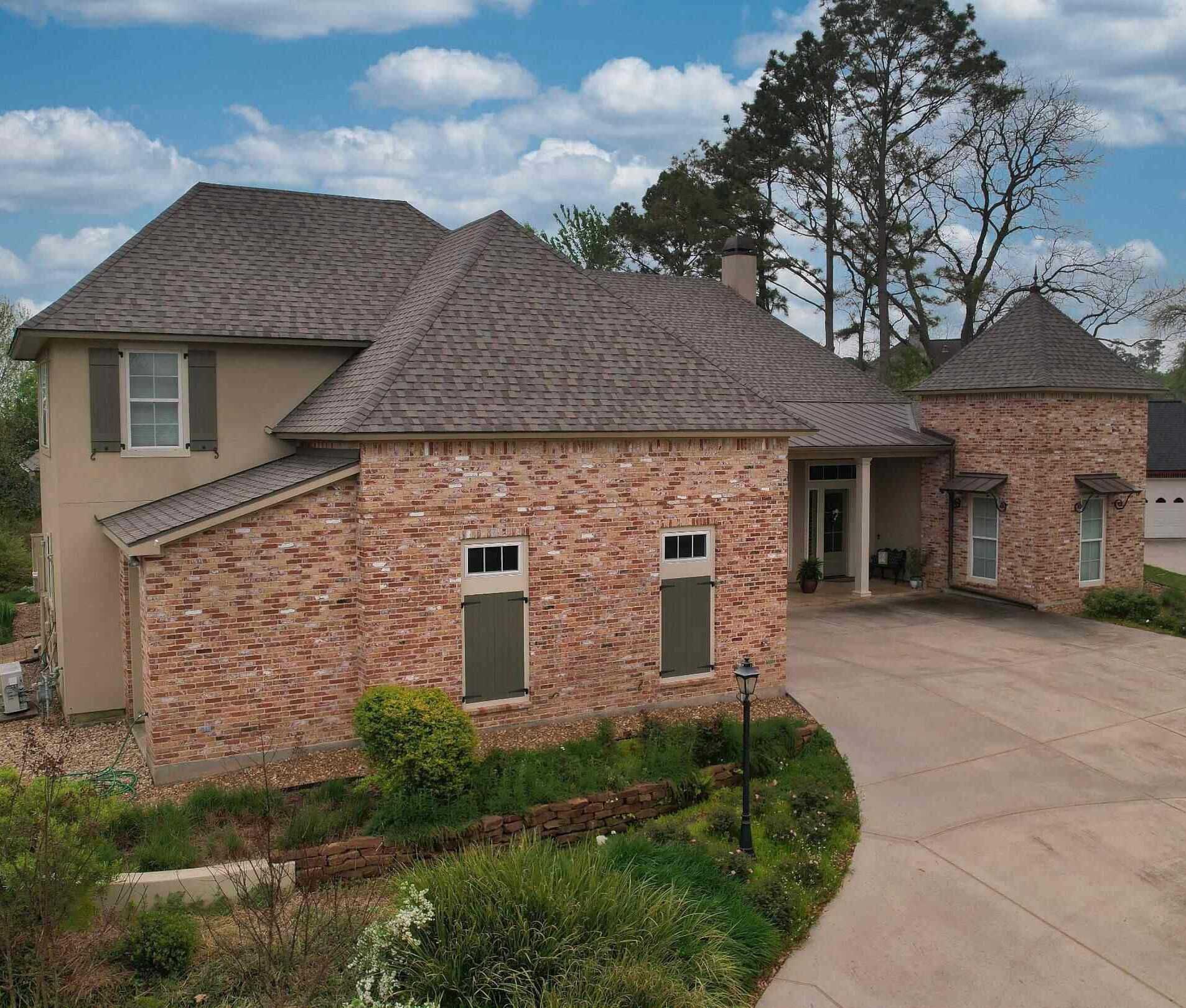The roof is the home’s first line of defense against the elements of weather and time. It shields the home from rain, wind, sun, and everything in between. However, over time the roof can suffer various types of damage. Identifying and understanding the different types of roof damage can be critical in the process of pursuing a homeowner’s insurance claim. As a leading roofing contractor in the Texas area, Redemption Roofing is here to guide homeowners through this process.
Common Causes and Types of Roof Damage
Weather-Related roof damage is the most common source of roof problems. Severe weather includes heavy rain, strong winds, hail, and lightning, which can inflict significant damage. Any form of severe weather will shorten the life of a roof and the roof material will usually determine the lifespan of the roof.
Storm Roof Damage
Heavy Rain
Heavy rain can lead to leaks if drainage systems are clogged or if the roof structure is already weakened. Water will always find a path to a damaged section of a home’s roof.
Hail
Hail can dent or crack shingles, compromising their protective layer. Roof damage from hail requires immediate attention to prevent further water intrusion and structural issues. Hailstones can range in size from small pebbles to large golf balls, and on rare occasions softball-sized. These can impact shingles, causing bruising, cracking, or even complete displacement. The severity of hail damage depends on the size and intensity of the hailstorm.
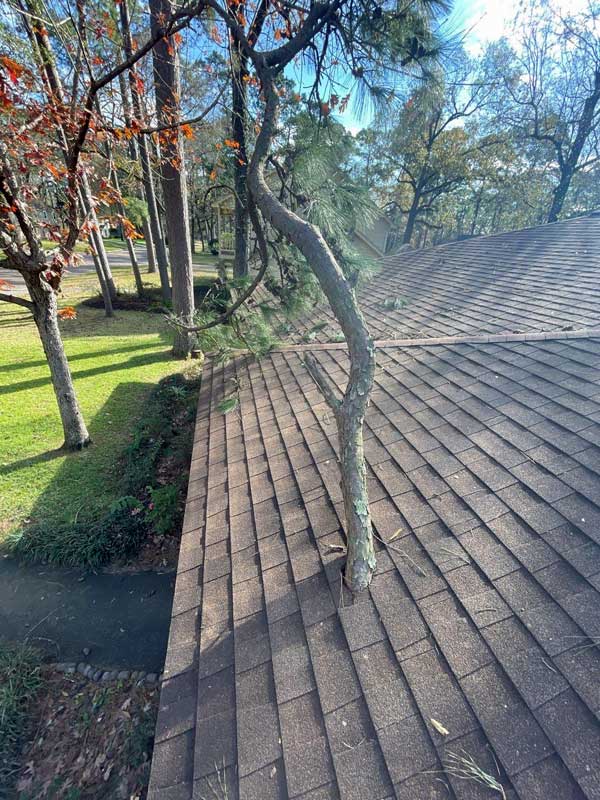
Wind Damage
High winds can tear off shingles, damage flashing, and even lift entire sections of the roof. Even moderate winds can cause damage over time, especially to older or poorly maintained roofs. Strong gusts can lift shingles, leaving the underlayment exposed.
Wildfires
Wildfires are a significant risk for homeowners and the risk is becoming greater every year. Texas leads the nation in the total acreage of wildfire destruction. Wildfires can destroy more than the roof, they can destroy the entire house. The summers are hotter and longer and wildfires can easily spread during times of drought and high winds. Metal and tile roofs can better resist the destructive power of fire and heat from wildfires.
Snow and Ice Damage
Heavy snowfall can put significant weight on the home’s roof, potentially leading to structural issues or even collapse. Ice dams, formed by melting snow refreezing at the eaves, can trap water and force it under shingles, causing leaks.
Other Causes of Roof Damage
Age and Wear
Roofs and roof materials have a lifespan. The most common roofing material is composition shingle and its lifespan can range from 15 to 30 years. Over time, all materials degrade due to sun exposure, temperature fluctuations, and general wear and tear. This can lead to cracking, curling, and loss of granules in asphalt shingles, making the roof more susceptible to damage.
Poor Installation
Improper installation is a significant contributor to premature roof failure. Roofing materials that are incorrectly installed may not withstand normal weather conditions, leading to premature leaks and other problems.
Falling Debris
Tree branches can fall on roofs or worse, they can become projectiles in heavy wind storms. Tree branches can puncture or tear roofing materials.
Lack of Maintenance
Regular roof maintenance is essential for identifying and addressing minor issues before they escalate into major problems. Neglecting maintenance can shorten the lifespan of the home’s roof and increase the likelihood of costly repairs.
Identifying Signs of Roof Damage
Early detection of roof damage can save significant time and money for the homeowner in the long run. The following warning signs can be detected with regular inspection and can help catch problems early.
Missing or Damaged Shingles
Shingles that are missing, cracked, curled, buckled, or have lost a significant amount of granules.
Leaks or Water Stains
Water stains on the ceilings or walls are a clear indication of a roof leak. There might also be noticeable dampness or mold growth in the home’s attic.
Sagging Roof Deck
A noticeable dip or sag in the home’s roofline could indicate structural damage.
Cracked or Damaged Flashing
Damaged flashing around chimneys, vents, and skylights can allow water to penetrate and damage the roof and interior walls.
Moss or Algae Growth
While not always a sign of immediate damage, moss and algae can trap moisture and eventually lead to deterioration of roofing materials.
Granules in Gutters
The presence of a large amount of shingle granules in gutters can indicate that shingles are nearing the end of their lifespan or are experiencing excessive wear.
Contact Redemption Roofing for a professional roof inspection should any of these warning signs be present. A professional roof inspection includes an examination and assessment of the roof structure, all roof materials, gutters, downspouts, flashing, and any signs of mold or wear. After the completion of the roof inspection the homeowner will be provided with an assessment of the roof, any observed damage or signs of concern, and a recommended course of action if needed.
Understanding The Homeowner Insurance Policy
Covered Perils
Determine what types of damage are covered by the policy. Most policies cover wind and hail damage, but the list of exclusions could be longer than expected.
Exclusions
Exclusions include damage from neglect or pre-existing conditions. The list of exclusions differs from company to company and geographic area. Visit our page about Insurance Exclusions for more information.
Deductible
This is the amount that will have to be paid out-of-pocket by the homeowner. In general, the homeowner insurance company will pay the balance after the deductible.
Actual Cash Value (ACV) vs. Replacement Cost Value (RCV)
Some policies pay based on the actual cash value of the damaged roof, which accounts for depreciation. Others offer replacement cost value, which covers the cost of replacing the roof with a new one at today’s prices. RCV policies generally provide more comprehensive coverage.
Navigating Insurance Coverage for Roof Damage
Understanding a homeowner’s insurance policy and how it covers roof damage can be confusing. Most standard homeowners’ insurance policies provide coverage for damage caused by covered perils, such as wind, hail, and fire. However, the specifics of the insurance coverage can vary depending on the policy, the type of roof damage, and the insurance company.
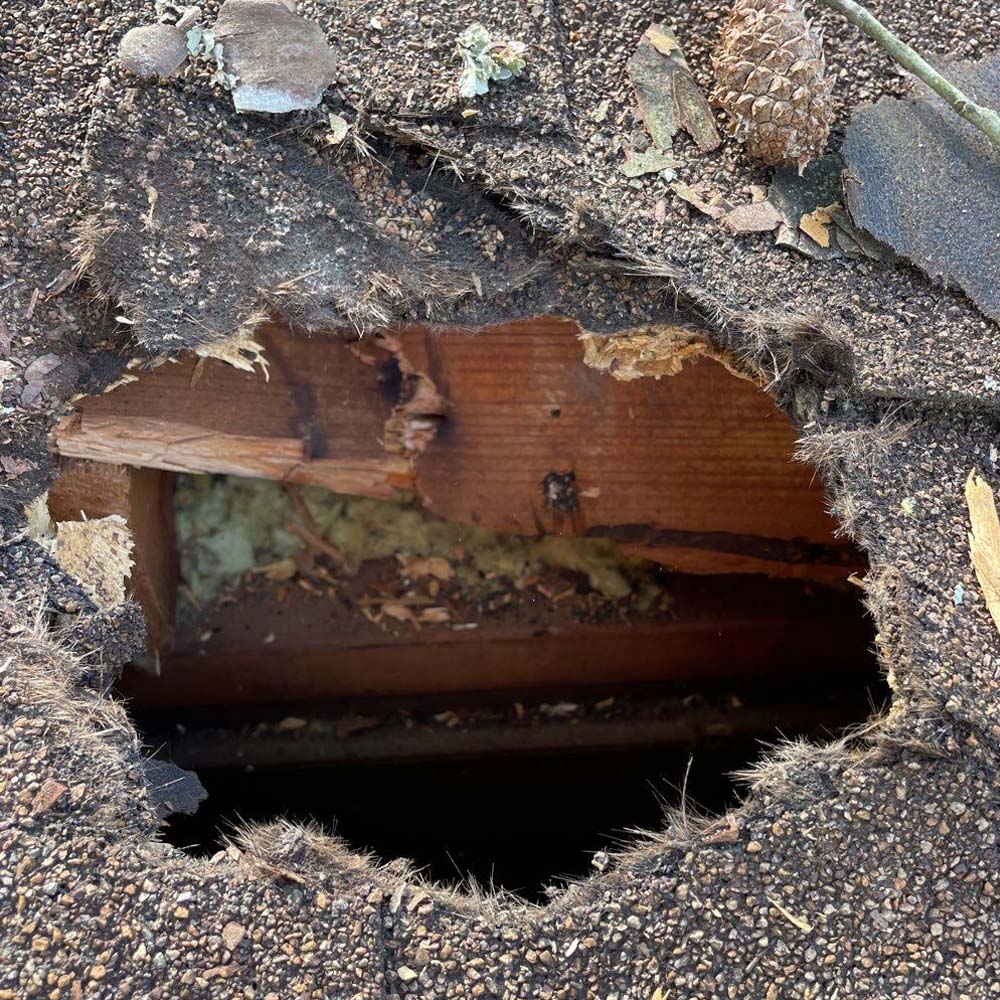
Filing an Insurance Claim
The general process for submitting an insurance claim for roof repair or roof replacement involves several key steps.
Contact The Insurance Company
Notify the insurance company as soon as possible after discovering the roof damage. The company should provide guidance about their claims process.
Request a Professional Roof Inspection
Contact a reputable roofing contractor to inspect the roof and provide a detailed and comprehensive assessment of the damage. This roof inspection report is a key element for an insurance claim.
Document the Damage
Ask Redemption Roofing to take multiple photographs and videos of the roof damage. Also ask Redemption Roofing for a copy of all photos and videos. This is the most decisive information and evidence for the insurance claim.
Submit The Homeowner Insurance Claim
The insurance company will need all the necessary documentation, including photos and videos, the roof inspection report, and any other relevant information.
Insurance Adjuster Inspection
The insurance company will likely send an adjuster to inspect the roof damage and determine the extent of the covered loss.
Receive Settlement
If the claim is approved, the insurance company will provide the homeowner with a settlement to cover the cost of roof repairs or a roof replacement, minus the deductible.
Choosing the Right Roofing Contractor for Insurance Claims
Addressing roof damage promptly is crucial for preventing further damage to the home and minimizing potential costs. Ignoring even seemingly minor issues can lead to more significant problems down the line, including structural damage, mold growth, and decreased home value.
At Redemption Roofing, we have extensive experience working with homeowners and insurance companies to navigate the complexities of roof repair and roof replacement following storm roof damage and other types of damage. We can provide a thorough inspection, detailed documentation, and expert repairs to ensure your roof is restored to its optimal condition.
Contact us today for a consultation and let us help you with all your roofing needs.
Other Home Insurance Topics


